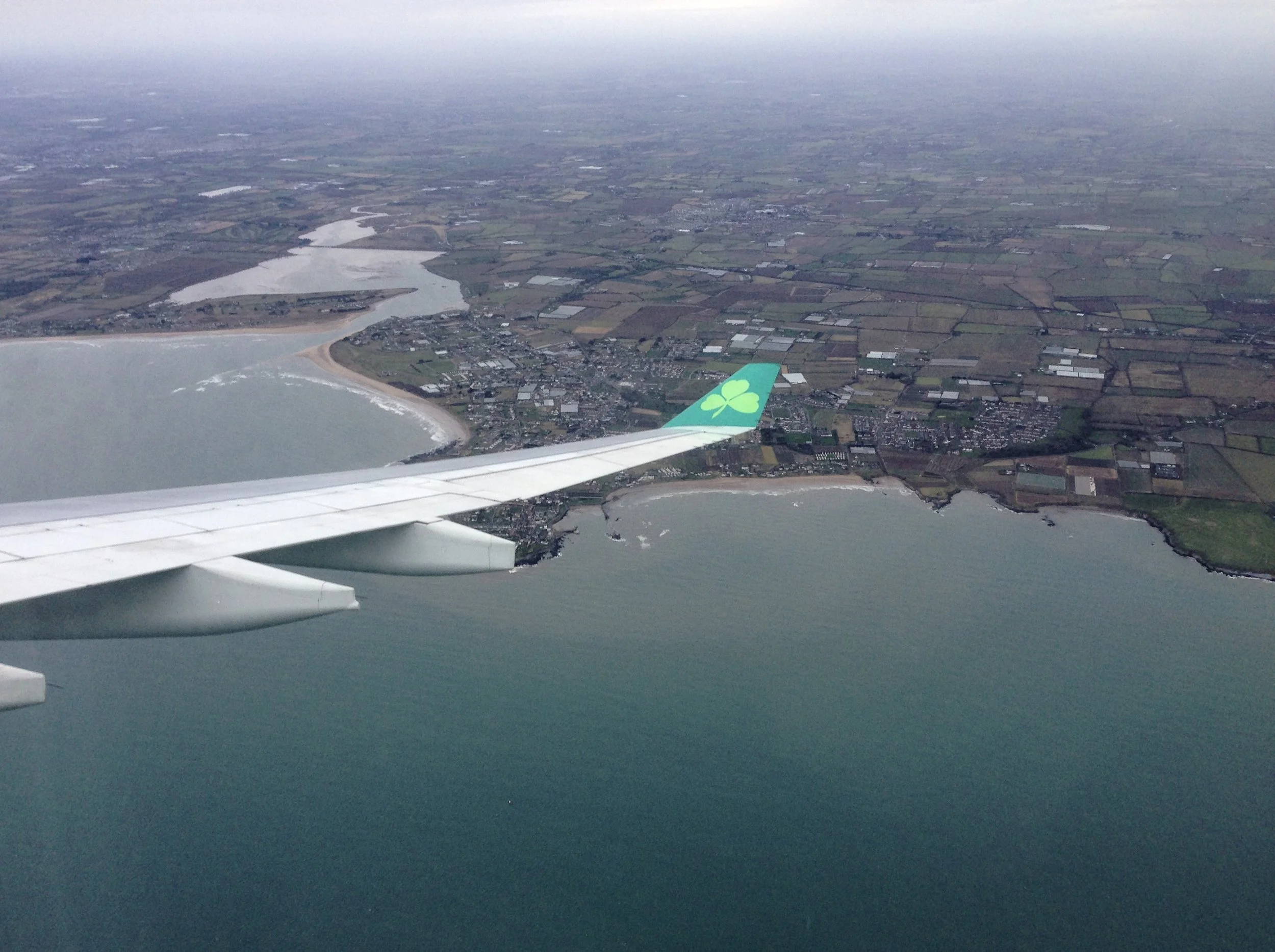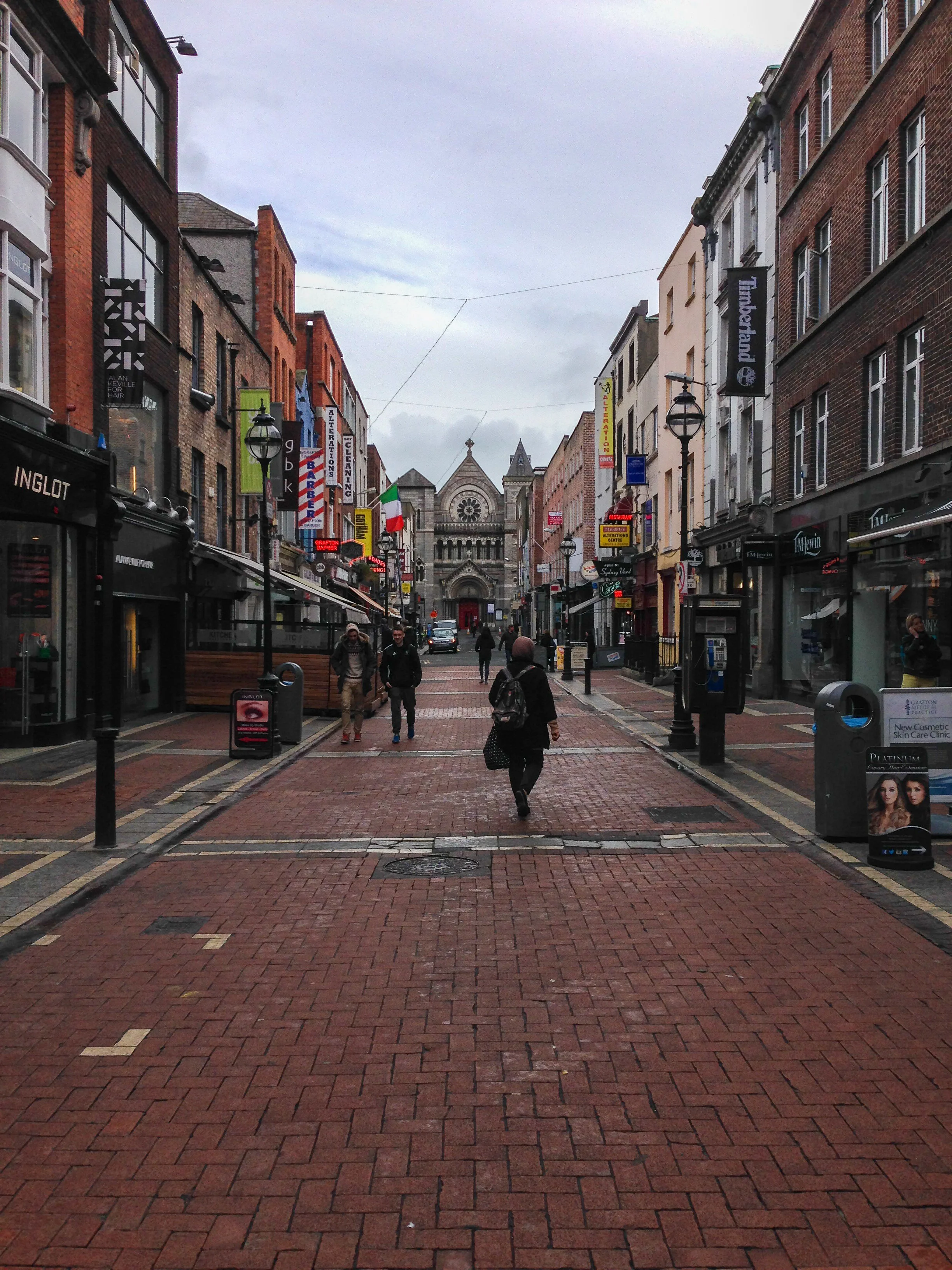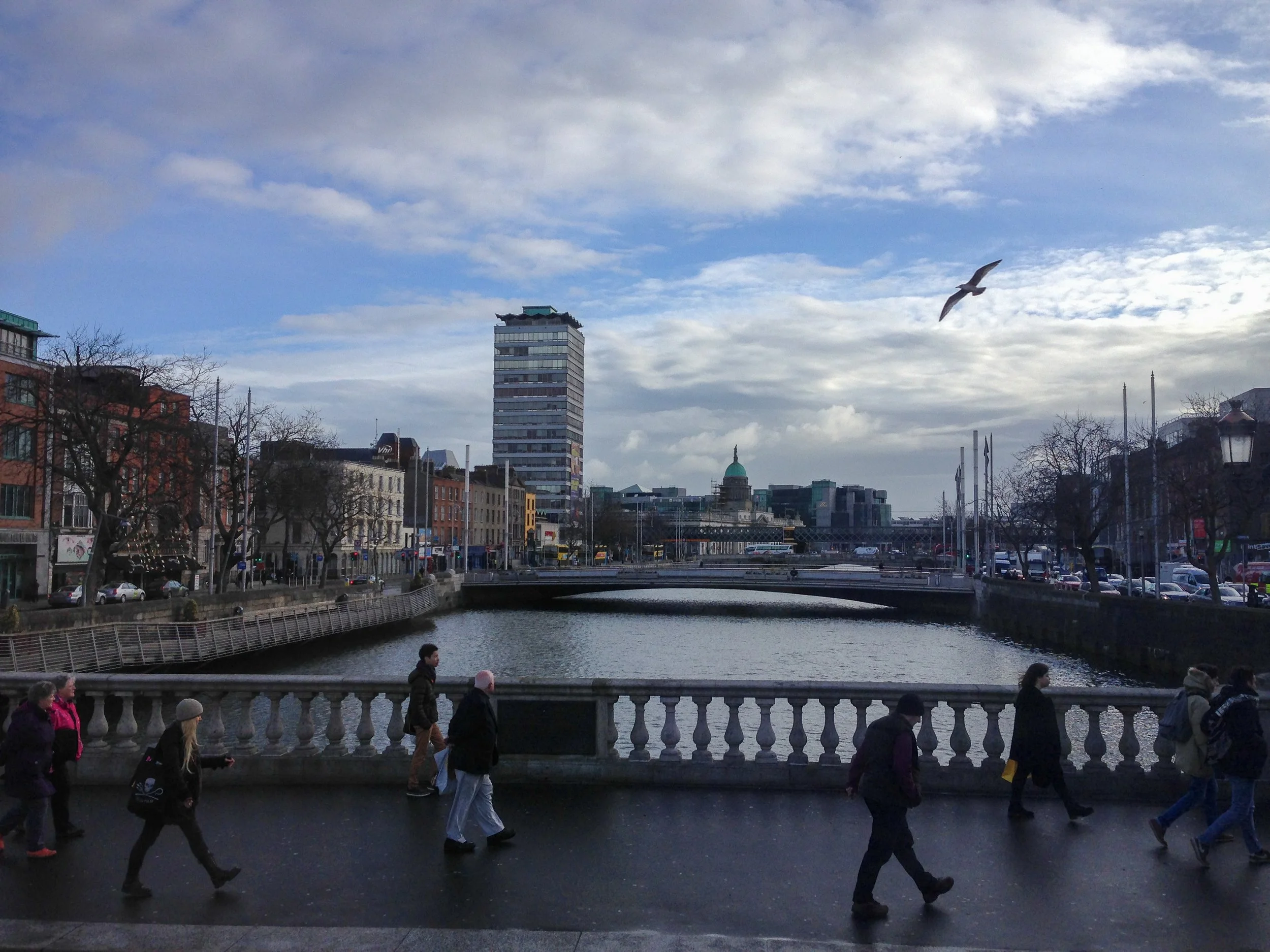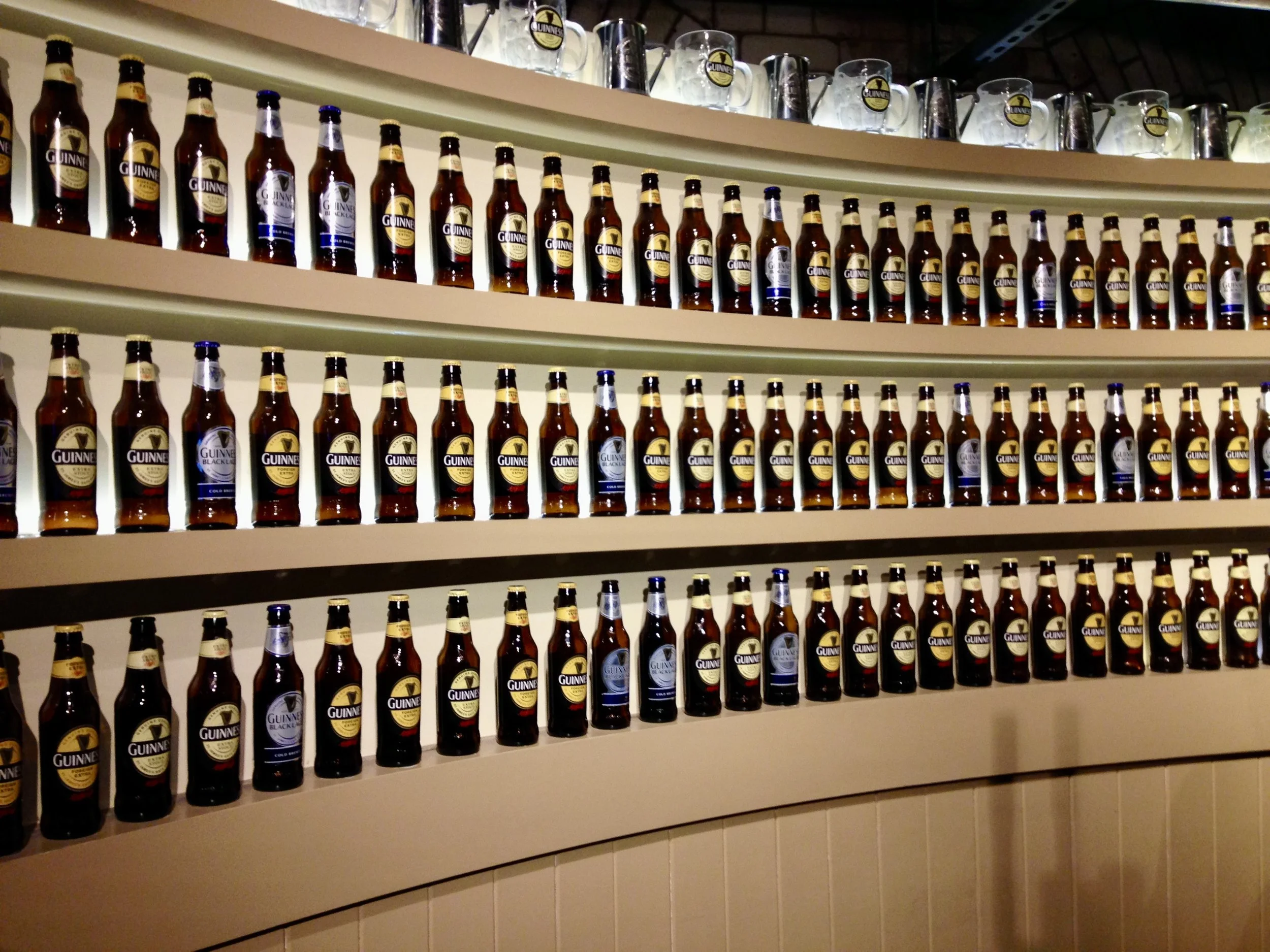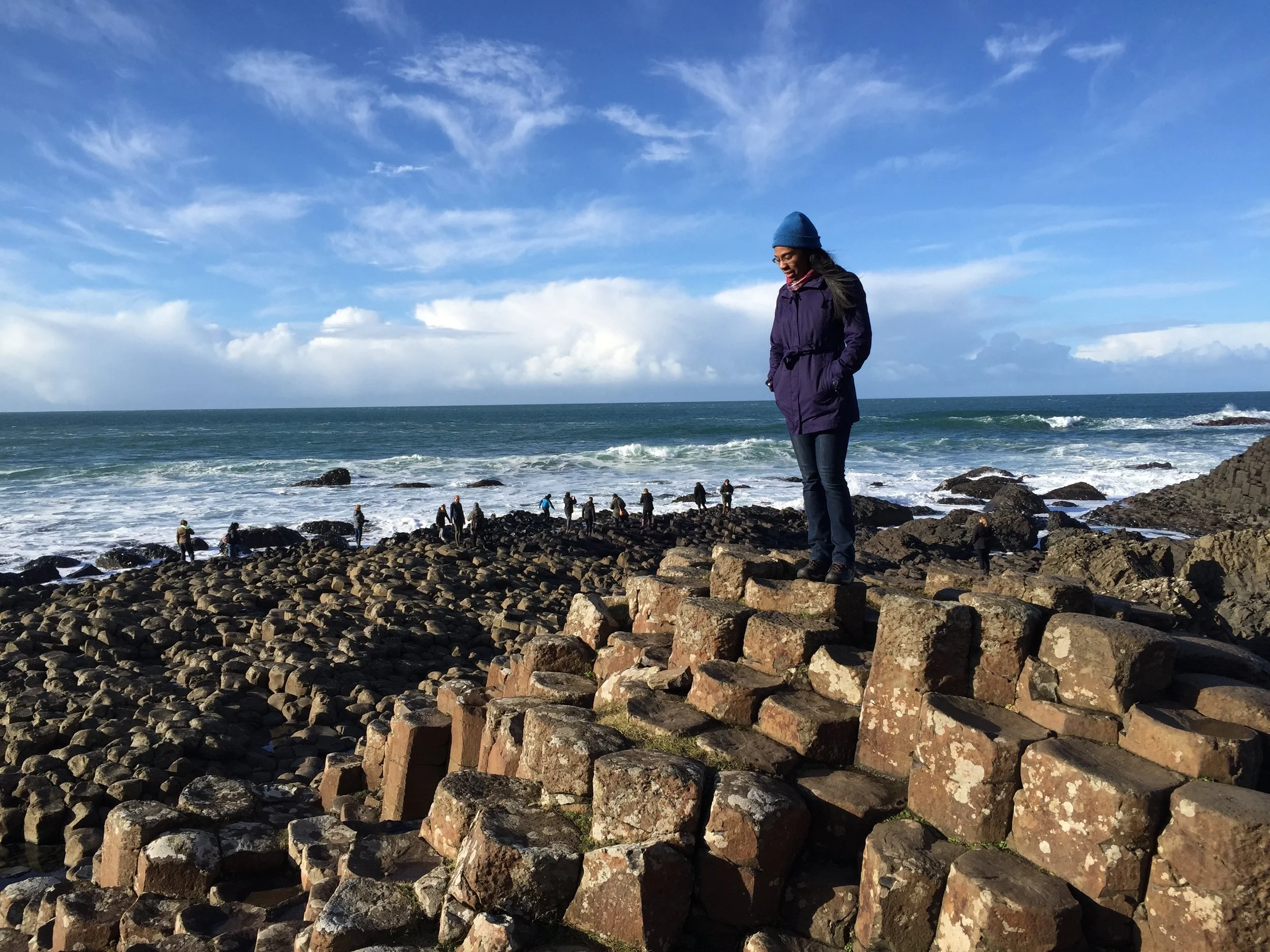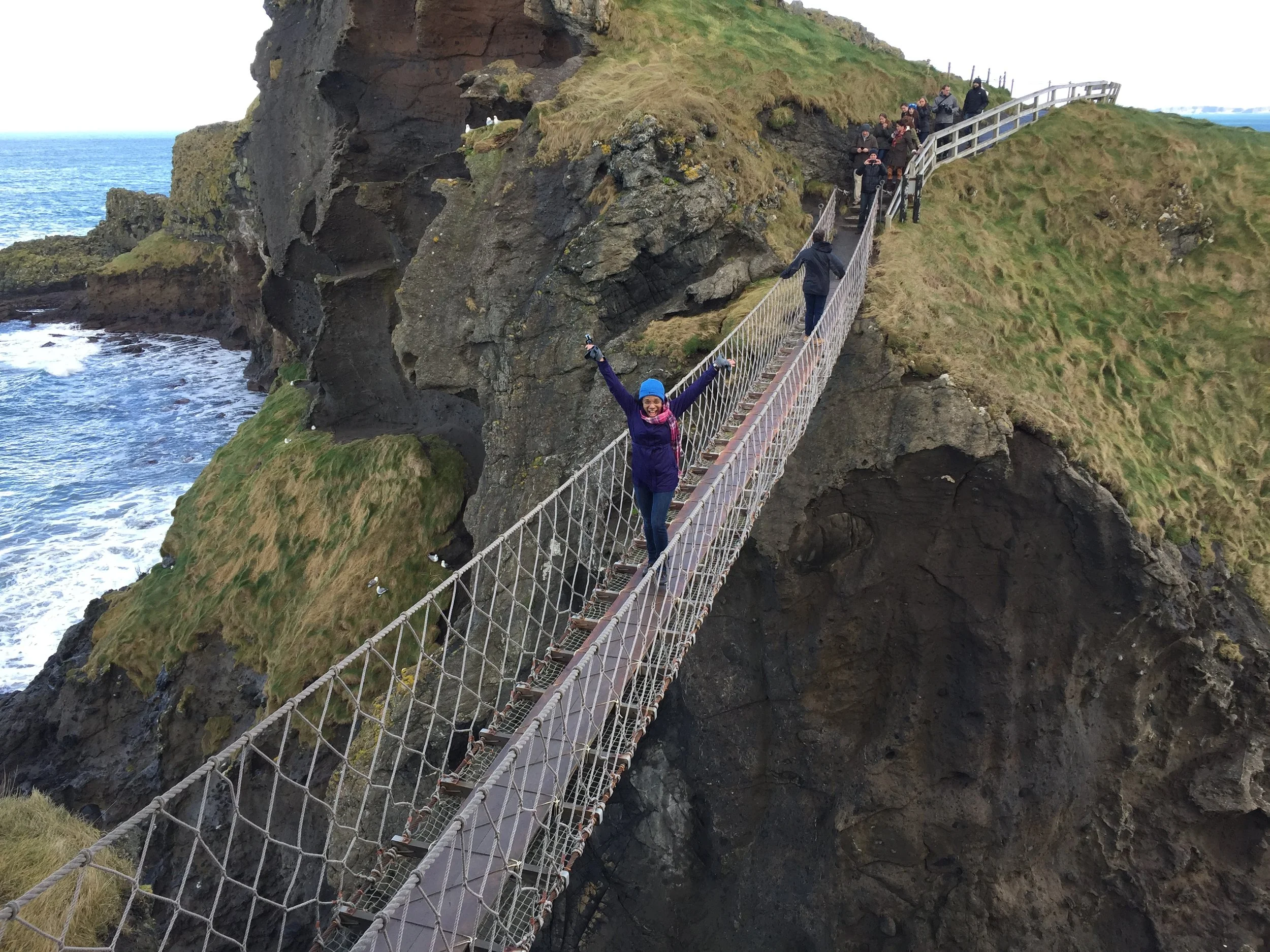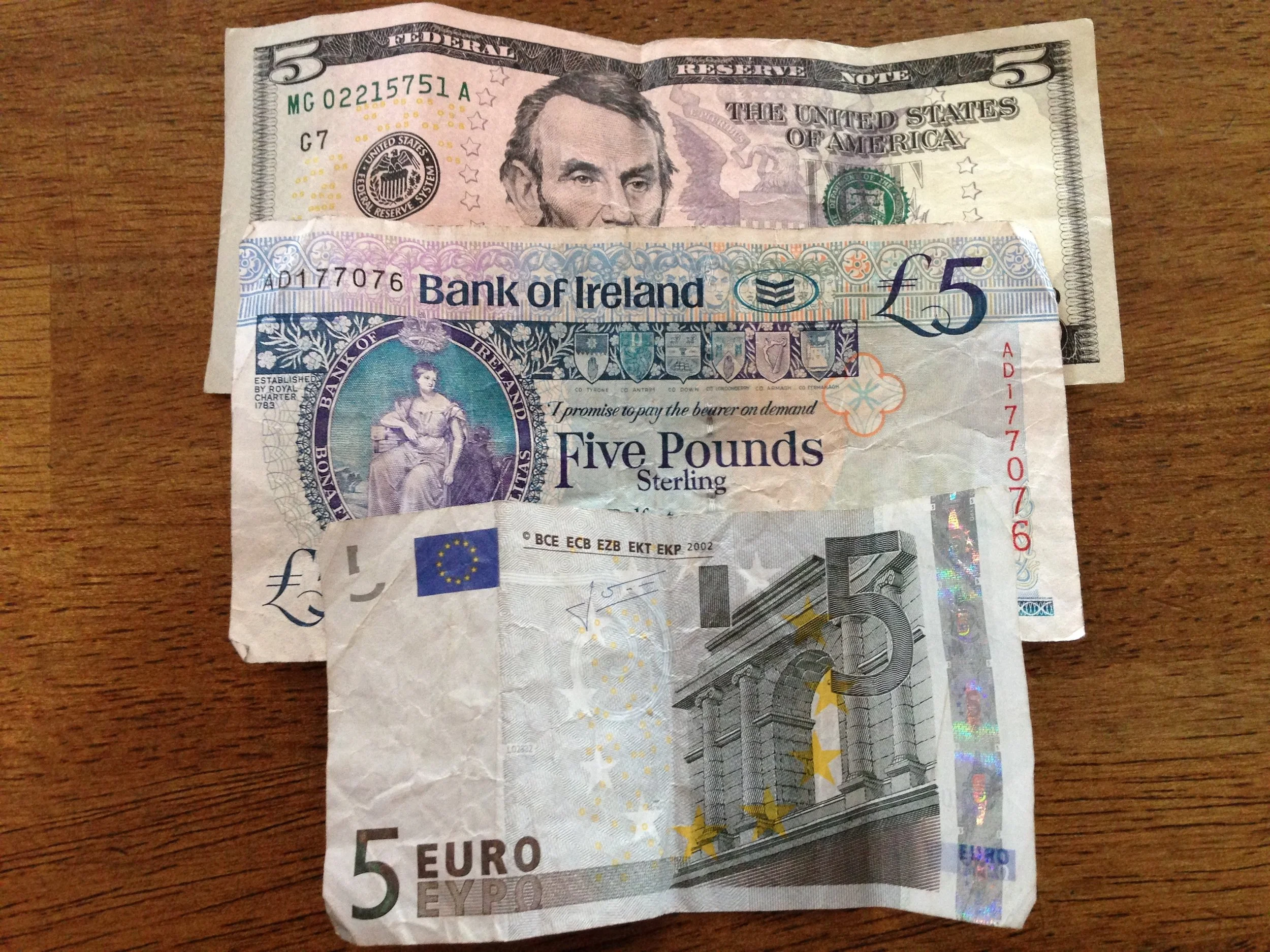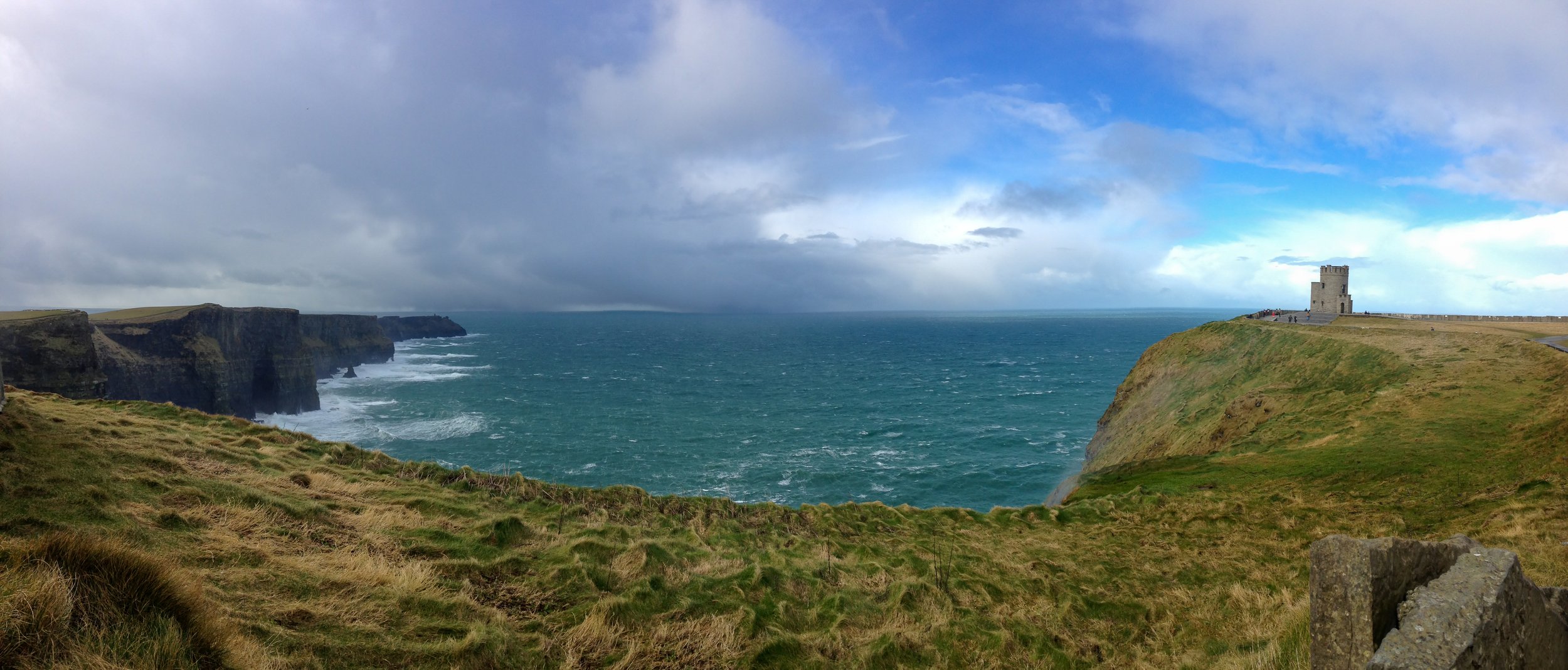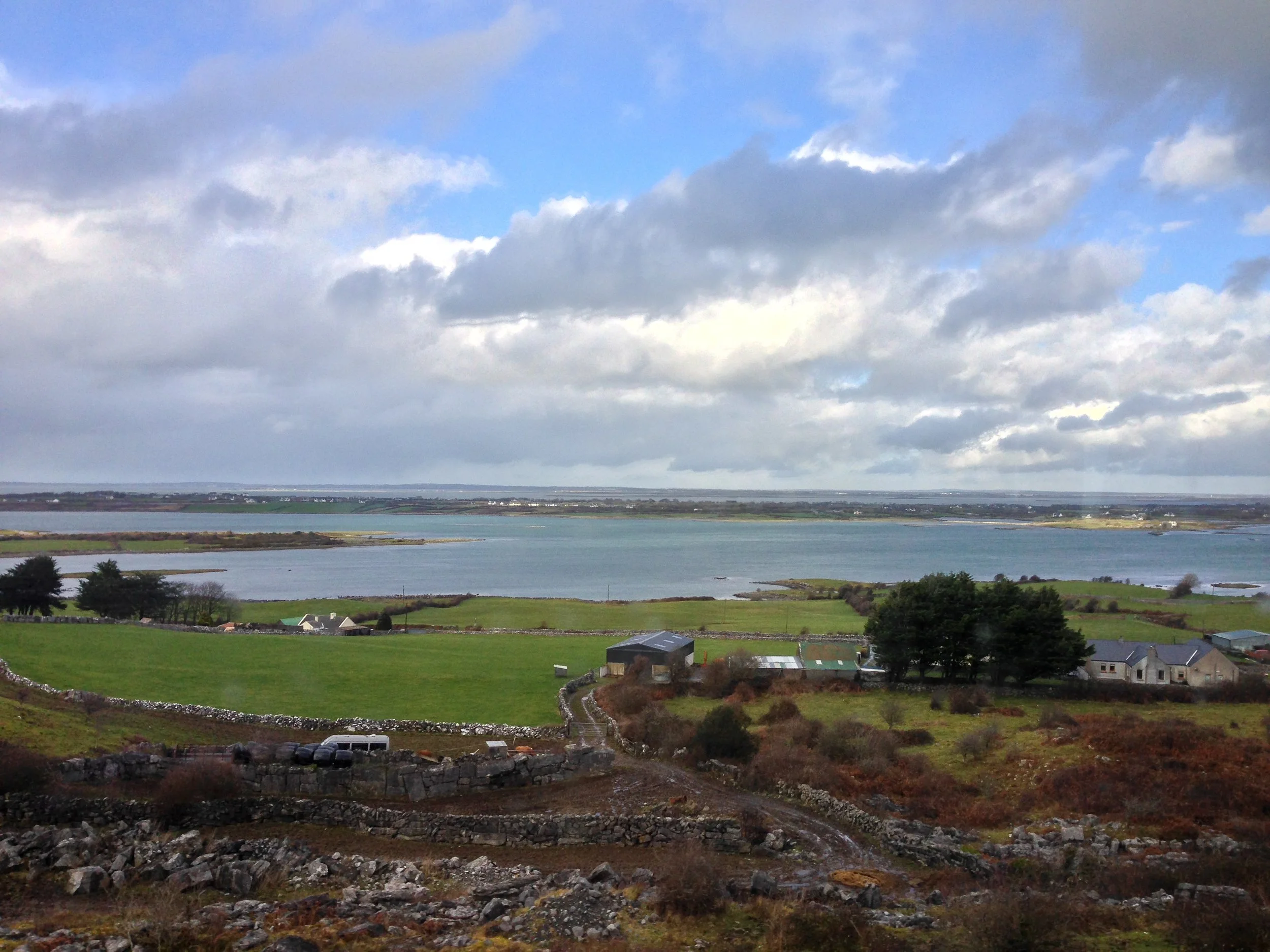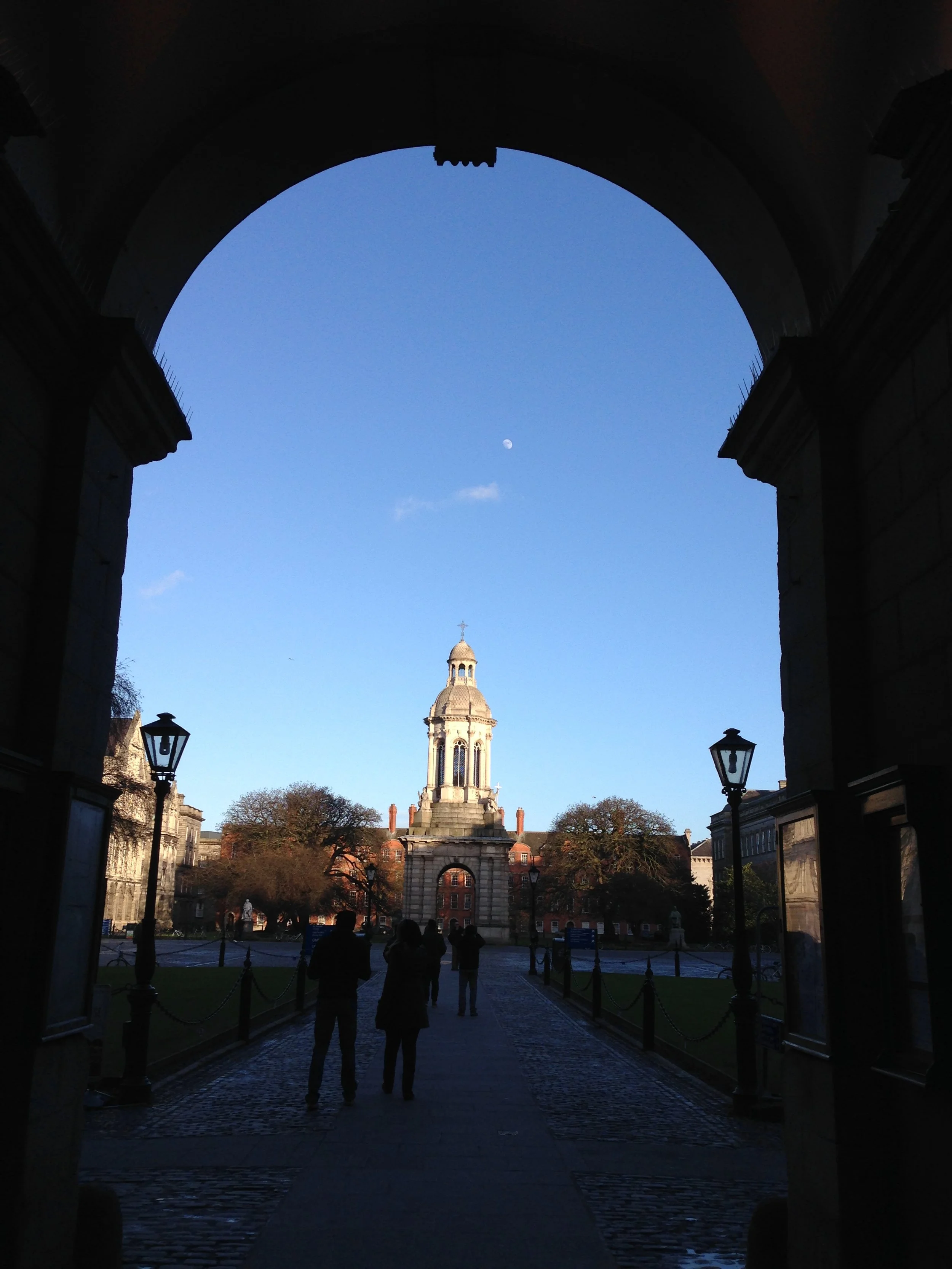Dublin Ireland
My second trip to Europe was in 2015, a two-week journey through Ireland, England, and France, with Dublin as both the starting and ending point.
The trip began in Chicago on a cold February evening. We flew Aer Lingus, my first time on the Irish airline. If there is one thing they do not hold back on, it is green. The plane, the uniforms, and even the seats were green. The flight itself was smooth, though a screaming toddler made sure there was no real rest. That was when I decided noise-canceling headphones needed to be added to my must-buy list.
We landed in Dublin early the next afternoon. In the customs line, that same toddler who had spent most of the flight crying was suddenly cheerful and running laps around everyone. After clearing customs, I picked up my luggage and withdrew euros from the first ATM I could find, something I always do in a new country.
Arrival in Dublin
The airport shuttle offered a first glimpse of Dublin beyond the terminal. We boarded the Aircoach, a bright blue express bus that runs between the airport and the city center. A one-way ticket cost about €7, a quick and affordable ride straight into the city.
The route began with open stretches of road and low buildings before turning into rows of brick houses and small corner shops. Every few blocks there was a pub or a bridal shop, their window displays glowing against the gray sky. As we got closer to the city, the view opened to stone buildings and banks, bridges over the River Liffey, and the gates of Trinity College just beyond the main street. This was also when I first heard the phrase “the Stiffy on the Liffey,” a nickname for a tall riverside monument officially known as the Spire of Dublin.
Finding the hotel turned into its own adventure. Dublin’s streets twist and loop in ways that make you feel like you have stepped into a maze. A kind older woman could see that we were lost and offered us directions to the street where the hotel was located. Bags in tow, we finally made our way to the Brooks Hotel, a comfortable boutique-style property tucked in the city center. The room was cozy, with deep red blankets, soft armchairs by the window, and classic furnishings that gave it a warm, old-world feel.
Exploring the City
Once settled, we began exploring the city on foot. Dublin is easy to walk, compact, full of history, and a mix of the old and new. The sky was overcast, and since my travel companion didn’t have a raincoat, we wandered along Drury Street and Grafton Street, where shops and cafés lined the walkways. She picked up a raincoat just before the weather turned, and when the drizzle started, we ducked into a nearby restaurant for lunch. It was one of those warm, inviting places where people linger over coffee and conversation while the rain tapped against the windows.
River Liffey in central Dublin
Later that afternoon, we visited the Guinness Storehouse. I am not a beer drinker, but it was one of those “must-do” experiences, and my friend was excited to go. The seven-story self-guided tour walks through the brewing process and brand history before ending in the Gravity Bar, where you can enjoy panoramic views of Dublin and, of course, a Guinness. I learned about the “perfect pour,” a two-part process that takes just under two minutes to complete and creates the beer’s signature creamy head. I also learned about the 9,000-year lease Arthur Guinness signed for the property, a fact that stuck with me long after the visit. It was also here that I learned Guinness doesn’t taste the same everywhere. Locals say it’s best enjoyed in Ireland, and after trying it, I could understand why.
Day Trip: Giant’s Causeway
The next morning, we joined a day tour to Northern Ireland, leaving before sunrise for the long drive north. I booked the tour through Viator, which made planning simple and dependable. The first stop was Carnlough Harbour, a quiet seaside village with small boats bobbing in the water. From there, the bus followed the Causeway Coastal Route, winding through hills, cliffs, and farmland.
We crossed the Carrick-a-Rede Rope Bridge near Ballintoy, a narrow bridge strung high above the rocks, and stopped briefly at the ruins of an old church along Ballytober Road before continuing to the Giant’s Causeway, a UNESCO World Heritage Site made up of hexagonal basalt columns shaped by volcanic activity millions of years ago. The waves pounded the shore as we climbed over the stones, the whole place feeling both otherworldly and ancient. Before heading back to Dublin, we stopped in Belfast, where City Hall glowed beautifully at night.
It was during this part of the trip that we learned a small but useful lesson. Although funds technically move easily between Ireland and the United Kingdom, the reality was not so simple. I had both euros and Irish pounds, which, although acknowledged, were not always accepted in the UK where British pounds were required. I found this out the hard way in a small gift shop, when the cashier politely explained that they could not take either. British pounds were accepted everywhere, but the reverse was not true. It was one of those things that sounds minor until you are standing at the counter realizing your cash is suddenly useless.
Day Trip: Cliffs of Moher
Cliffs of Moher
After a few days in Ireland, we flew to England and later to France before returning to Dublin for the final leg of the trip.
This time, we were able to navigate the city better and stayed in a smaller hotel called Drury Court Hotel, located just off Grafton Street. The following morning, we joined another Viator day tour, this time to the Cliffs of Moher. The drive took us west across the country, through quiet towns and endless green fields, until the land dropped suddenly into the Atlantic. The cliffs towered above the ocean, mist rising from the waves below. Nearby, the Burren Coastline stretched out in slabs of dark limestone, shaped by wind and time.
On the way back, we stopped in Limerick to see King John’s Castle on the River Shannon, then continued through Galway, where colorful boats lined the Claddagh Basin near the Pier Head Pub.
The next day we boarded our flight back to Chicago. Ireland had been the first and last stop of the journey, a place of green fields, coastal cliffs, and easy smiles. It was the kind of country that leaves you curious for more and set the tone for everything that came after.
Looking Back: Ireland Then and Now
When I visited in 2015, Dublin was lively but still felt local with smaller shops, fewer crowds, and a calm that made wandering easy. The Guinness Storehouse was already the city’s biggest attraction, but it has since expanded with new exhibits and a renovated rooftop bar. Across the country, travel has become simpler. The main highways between Dublin, Galway, and Limerick are smoother and better connected, and day trips like the Cliffs of Moher tour are now easier to manage.
Back then, many rural routes were narrow country roads winding through farmland and small villages. At one point, we even found ourselves caught in what locals jokingly called an Irish traffic jam — a slow backup on a one-lane road caused by a flock of sheep being herded across. Everyone just stopped and waited until the road cleared. No horns, no impatience, just quiet amusement. It was one of those small travel moments that said more about Ireland than any landmark could.
Today, much of the country’s infrastructure has modernized. The Giant’s Causeway and Carrick-a-Rede Rope Bridge now use timed entry systems to manage crowds, and visitors are encouraged to book ahead during busy seasons. In Dublin, contactless payments have replaced most cash transactions, and the Leap Card has made public transport more convenient.
Even with the updates, the essence of Ireland remains the same. The people are friendly, the countryside still impossibly green, and that easy sense of humor and hospitality continues to meet you the moment you arrive.
Getting Around
In Dublin:
Dublin is compact and easy to navigate on foot, especially around areas like Grafton Street, Temple Bar, and Trinity College. Most major attractions are within walking distance of one another, and the city’s bus and tram network connects the rest. The Aircoach and Dublin Express buses run directly between the airport and the city center, with Aircoach costing about €7 one way in 2015. For local transport, the Leap Card is now the easiest way to pay on buses, trams, and trains.
Day Tours:
For destinations beyond Dublin, booking through Viator made day trips simple and dependable. The Giant’s Causeway and Cliffs of Moher tours both included hotel pickup and covered a full day of sightseeing with stops at smaller towns and viewpoints along the way.
By Car:
Driving in Ireland can be rewarding if you are comfortable on narrow roads and driving on the left. Rental cars give you the freedom to explore at your own pace, but expect winding routes and roundabouts, especially in the countryside.
By Train and Bus:
Ireland’s train network links most major cities, including Dublin, Cork, Galway, and Limerick. Bus Éireann and private companies cover smaller towns and regional routes. Trains are more comfortable for longer distances, but buses tend to be cheaper and more frequent.
Other Things to Do in Ireland
If you have more time in the country than I did, here are a mix of popular attractions and lesser-known places worth visiting. Mind you, I did not visit all of these during my trip, but they are worth considering if you have extra time in Ireland.
In Dublin:
Visit Kilmainham Gaol, the historic prison that tells Ireland’s story of independence through the people once held there. Walk through Phoenix Park, one of Europe’s largest city parks and home to wild deer. Explore Merrion Square to see the colorful Georgian doors and the statue of Oscar Wilde, or relax in St. Stephen’s Green. For museums, both the National Museum of Ireland and the National Gallery are free and centrally located.
For something quieter, step into Marsh’s Library, one of the oldest public libraries in the world, or explore Dublin Castle’s Chester Beatty Library, which houses manuscripts, rare books, and art from across continents. In the evening, wander along South Anne Street or Fade Street, where small restaurants and wine bars are tucked between shops.
Outside Dublin:
Make your way to Kilkenny, a medieval town with narrow streets, a grand castle, and a lively craft scene. In Cobh, near Cork, learn about Ireland’s emigration history at the Titanic Experience, located in the town where the ship made its final stop in 1912.
A short drive from Cork brings you to Blarney Castle, home of the famous Blarney Stone. Visitors climb to the top of the castle and lean backward to kiss the stone, said to give the “gift of eloquence.” The castle grounds are also worth exploring, especially the Poison Garden and the Rock Close, which features ancient yew trees and druid stones.
In Killarney National Park, rent a bike or take a jaunting-car ride to explore the lakes and Muckross House, or continue along the Ring of Kerry, known for its sweeping ocean views. Nearby, the Gap of Dunloe offers a quieter and more dramatic landscape that feels far removed from modern life.
For something lesser known, visit Glendalough in County Wicklow, a glacial valley with early monastic ruins and hiking trails through ancient woodland. Along Ireland’s east coast, Howth makes for an easy day trip from Dublin, with coastal walks, a lighthouse, and fresh seafood served right by the harbor.
If you are heading north, Derry has well-preserved city walls and murals that tell its complex history, while Belfast’s Cathedral Quarter is known for street art, small galleries, and live music venues that rival those in Dublin.
No matter which direction you travel, Ireland rewards curiosity. Between the famous stops and the quiet corners, you will always find something unexpected — whether it is a pub filled with music, a castle ruin standing in a green field, or a view that makes you stop just to take it in.


